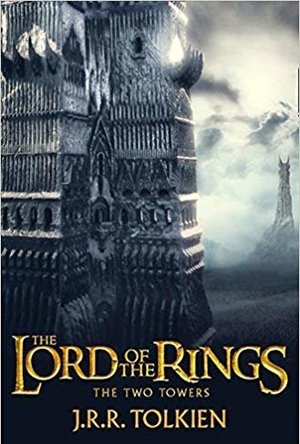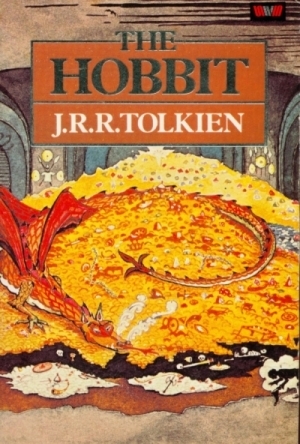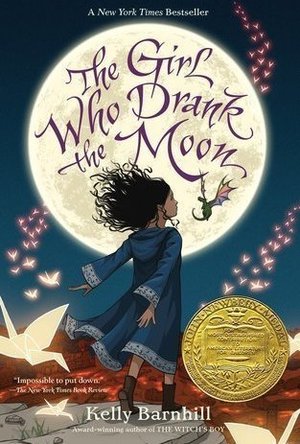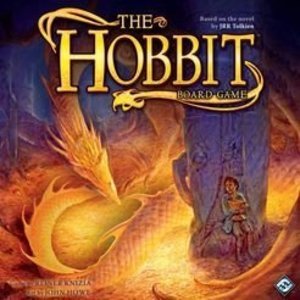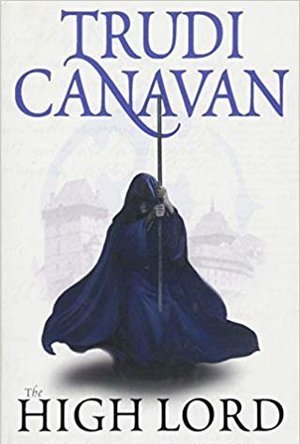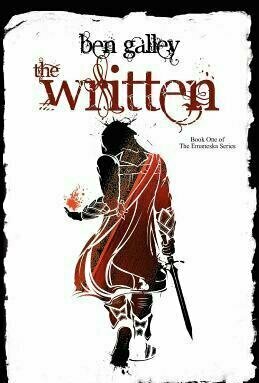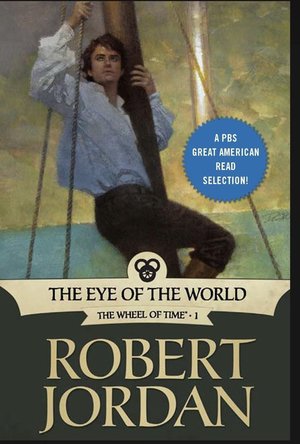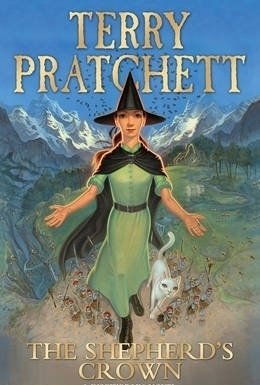Search
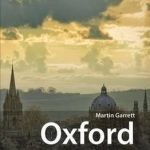
Oxford
Book
Oxford started as an Anglo-Saxon border outpost, with a bridge replacing the 'oxen ford' from which...
LilyLovesIndie (123 KP) rated The Two Towers (The Lord of the Rings, #2) in Books
Nov 5, 2018
See the latest and more detailed review over on Ramble Media http://www.ramblemedia.com/?p=19824
I'll keep this brief, as with the other review, because quite frankly, I'm a busy bee and there are hundreds of more detailed and in depth reviews out there for you all to peruse at will!
So, the company is sundered, we finally get our first tantalising glimpse of Mordor and come across some wonderful creations, both good and evil, of what must have been a very active imagination. Yet for some reason, this book is a lot harder to read than its prequel.
If I'm totally honest, I'm being over generous with my fourth star. At times, this book really dragged, it felt like a chore to read, was hard to keep events straight and in chronological order, and quite honestly could have been a whole lot shorter. Regardless of that, there are some redeeming features that have me literally dying to get started on the final instalment.
If nothing else, Tolkien is a master of cliff hangers! He has written a fantastic collection of books that always, without fail, leave you hanging on to the last word of the book, trying to glean as much information as you can from it, to make the short wait to finding the next part more bearable. I honestly cannot imagine how this must have been for those reading when the book was first released, I'm struggling to wait a few hours to find out what happened to Frodo, back then they probably waited a few months at least!
The mystery over what the other half of the company are up to whilst you're reading about the others is a great motivator to carry on. I have to say, I find Frodo and Sam very dull at times, it required Gollum to perk up their half of the book, but I find Aragorn and his side of the company much more compelling to read. Maybe it's simply because I'm a closet hobbit and I don't enjoy reading about them because of that, or maybe it's because an Elf, a Wizard and a descendent of a mighty lineage are just much more interesting and impressive. I don't know, but Frodo is boring me.
And on that note, I suppose I should really call it a day before I go and rant for thousands of words about what I don't like about Frodo. It's a good book, slow at times and hard going, rather like their journey, but it redeemed itself towards the end (even if Shelbob will be giving me nightmares for the foreseeable future).
I'll keep this brief, as with the other review, because quite frankly, I'm a busy bee and there are hundreds of more detailed and in depth reviews out there for you all to peruse at will!
So, the company is sundered, we finally get our first tantalising glimpse of Mordor and come across some wonderful creations, both good and evil, of what must have been a very active imagination. Yet for some reason, this book is a lot harder to read than its prequel.
If I'm totally honest, I'm being over generous with my fourth star. At times, this book really dragged, it felt like a chore to read, was hard to keep events straight and in chronological order, and quite honestly could have been a whole lot shorter. Regardless of that, there are some redeeming features that have me literally dying to get started on the final instalment.
If nothing else, Tolkien is a master of cliff hangers! He has written a fantastic collection of books that always, without fail, leave you hanging on to the last word of the book, trying to glean as much information as you can from it, to make the short wait to finding the next part more bearable. I honestly cannot imagine how this must have been for those reading when the book was first released, I'm struggling to wait a few hours to find out what happened to Frodo, back then they probably waited a few months at least!
The mystery over what the other half of the company are up to whilst you're reading about the others is a great motivator to carry on. I have to say, I find Frodo and Sam very dull at times, it required Gollum to perk up their half of the book, but I find Aragorn and his side of the company much more compelling to read. Maybe it's simply because I'm a closet hobbit and I don't enjoy reading about them because of that, or maybe it's because an Elf, a Wizard and a descendent of a mighty lineage are just much more interesting and impressive. I don't know, but Frodo is boring me.
And on that note, I suppose I should really call it a day before I go and rant for thousands of words about what I don't like about Frodo. It's a good book, slow at times and hard going, rather like their journey, but it redeemed itself towards the end (even if Shelbob will be giving me nightmares for the foreseeable future).
LilyLovesIndie (123 KP) rated The Hobbit in Books
Nov 5, 2018
See the latest version of this review over on Ramble Media http://www.ramblemedia.com/?p=19585
Wow, am I glad that watching the film made me want to reread this timeless classic! I first read this as an eleven year old at school, trying to prove a point to a teacher that a child could read a book like this. I succeeded in reading it, thought the fantasy great, but remembered very little of the story or the fact there was another epic adventure waiting to be told by the much praised JRR Tolkien.
How I have missed out! The story follows a very plain, and at times fussy, Mr Baggins of Bagend, a Hobbit of Hobbiton, in the 'reasonable West', as he takes an adventure, in the company of 'dwarves' to save their long forsaken home. The company encounter many trials and tribulations along the way, from angry goblins, to giant spiders, to meddlesome elves and even Smaug the Terrible, but they triumph over them all.
Honestly, I cannot give praise enough for the book, and many have done so before in, what I am sure, will be better expressed reviews and accolades of praise, so I will aim to keep this short and sweet, picking up on key, outstanding features that bowled me over. The first thing I have to raise is the characterisation. The 'cast' of assembled characters, from the main company of the dwarves, to the helpers and and those that hinder them along their journey, are all thoroughly well explained by the creative use of authorial voice in the narration of events. Mr Baggins is, although a little fussy at times, an incredibly likable character, as I'm sure most hobbits are, who's funny outbursts and ideas make him the comedy relief at tense times. He is also, without a doubt, the brains and drive behind the adventure, once Gandalf has left, and proves that anyone, no matter how small can be a hero - a great quality to see in a major character who is less 'normal' than most as too often it's the popular, stereotypical heroes that dominate literature! Thorin and his company of bedraggled dwarves are a barrel of laughs at times (no pun intended!) and are all well developed in what is a relatively short story.
And that, I suppose, is the best feature of this book, for me at least! The development of plot, characters, scenery and everything else you could possibly wish to know about anyone involved in a story (eg background history etc) is all given to you in abundance, but they never overpower each other, they are instead woven intricately together in a brand of storytelling that belongs in oral tradition, not in words on a page. It is clear, especially after reading the foreword, that the Hobbit originated as a story to be told, not read, and incredibly, that makes it all the more readable as it hooks you in a way few books ever will. It aims to drag you, however reluctantly or willingly, into the adventure and take you away from your own little, safe, hobbit hole across the Shire and the Wild, and everywhere else they travel, with you feeling completely immersed as the final member of the company, but one who goes as unnoticed by the others as if you were wearing Bilbo's ring. However, the extremely clever thing that Tolkien does, and of this I am supremely envious of as I wish I could do this in my own writing, is that even though you feel so well informed, you still want to know more about them, and for the creative among us, we want to fill those gaps with our own imagination! Very rarely do I come across an author who manages to inform, excite, engage, and engender creativity in such a way in under 300 pages.
Finally, I guess I have to give credit to the wonderful drawings accompanying the text. Beautifully drawn, incredibly supportive of your own imaginative process, yet strangely, not limiting in letting you continue to let your imagination wander. The are a wonderful addition to the book, and I say that as someone who doesn't think a real book should have pictures, and add a greater accessibility to all of the new experiences you encounter as you travel through the story to the Lonely Mountain at the end.
And so, I draw my ramblings to a close, however there is plenty more to be said, that will be left unsaid, partly due to my desire to go and read Lord of the Rings for the first time as a result of reading The Hobbit. I can only conclude with the highest praise for this story, and the highest level of recommendation to anyone who has not yet read it, or those like me that think because they read it as a child it counts. This is a book that should, and deserves, to be read over and over again, and one of those occasions should be reading it aloud to a child, as that, is the only way to truly experience the wonderful story weaved by a master storyteller.
Wow, am I glad that watching the film made me want to reread this timeless classic! I first read this as an eleven year old at school, trying to prove a point to a teacher that a child could read a book like this. I succeeded in reading it, thought the fantasy great, but remembered very little of the story or the fact there was another epic adventure waiting to be told by the much praised JRR Tolkien.
How I have missed out! The story follows a very plain, and at times fussy, Mr Baggins of Bagend, a Hobbit of Hobbiton, in the 'reasonable West', as he takes an adventure, in the company of 'dwarves' to save their long forsaken home. The company encounter many trials and tribulations along the way, from angry goblins, to giant spiders, to meddlesome elves and even Smaug the Terrible, but they triumph over them all.
Honestly, I cannot give praise enough for the book, and many have done so before in, what I am sure, will be better expressed reviews and accolades of praise, so I will aim to keep this short and sweet, picking up on key, outstanding features that bowled me over. The first thing I have to raise is the characterisation. The 'cast' of assembled characters, from the main company of the dwarves, to the helpers and and those that hinder them along their journey, are all thoroughly well explained by the creative use of authorial voice in the narration of events. Mr Baggins is, although a little fussy at times, an incredibly likable character, as I'm sure most hobbits are, who's funny outbursts and ideas make him the comedy relief at tense times. He is also, without a doubt, the brains and drive behind the adventure, once Gandalf has left, and proves that anyone, no matter how small can be a hero - a great quality to see in a major character who is less 'normal' than most as too often it's the popular, stereotypical heroes that dominate literature! Thorin and his company of bedraggled dwarves are a barrel of laughs at times (no pun intended!) and are all well developed in what is a relatively short story.
And that, I suppose, is the best feature of this book, for me at least! The development of plot, characters, scenery and everything else you could possibly wish to know about anyone involved in a story (eg background history etc) is all given to you in abundance, but they never overpower each other, they are instead woven intricately together in a brand of storytelling that belongs in oral tradition, not in words on a page. It is clear, especially after reading the foreword, that the Hobbit originated as a story to be told, not read, and incredibly, that makes it all the more readable as it hooks you in a way few books ever will. It aims to drag you, however reluctantly or willingly, into the adventure and take you away from your own little, safe, hobbit hole across the Shire and the Wild, and everywhere else they travel, with you feeling completely immersed as the final member of the company, but one who goes as unnoticed by the others as if you were wearing Bilbo's ring. However, the extremely clever thing that Tolkien does, and of this I am supremely envious of as I wish I could do this in my own writing, is that even though you feel so well informed, you still want to know more about them, and for the creative among us, we want to fill those gaps with our own imagination! Very rarely do I come across an author who manages to inform, excite, engage, and engender creativity in such a way in under 300 pages.
Finally, I guess I have to give credit to the wonderful drawings accompanying the text. Beautifully drawn, incredibly supportive of your own imaginative process, yet strangely, not limiting in letting you continue to let your imagination wander. The are a wonderful addition to the book, and I say that as someone who doesn't think a real book should have pictures, and add a greater accessibility to all of the new experiences you encounter as you travel through the story to the Lonely Mountain at the end.
And so, I draw my ramblings to a close, however there is plenty more to be said, that will be left unsaid, partly due to my desire to go and read Lord of the Rings for the first time as a result of reading The Hobbit. I can only conclude with the highest praise for this story, and the highest level of recommendation to anyone who has not yet read it, or those like me that think because they read it as a child it counts. This is a book that should, and deserves, to be read over and over again, and one of those occasions should be reading it aloud to a child, as that, is the only way to truly experience the wonderful story weaved by a master storyteller.
Goddess in the Stacks (553 KP) rated The Girl Who Drank the Moon in Books
Sep 12, 2018
I adore this cover. It was what first caught my eye when people started talking about this book, and then to find out it was a fairytale about a girl, a witch, and a dragon? I was sold. The trouble was getting my hands on it! But it has finally worked its way through the long line of other people who wanted to read it at my library, and I got to check it out. I've labeled it YA Fantasy, but it's actually pretty close to middle-grade Fantasy. Definitely something younger readers could understand, but enough meat in it for older readers who like fairy tales to enjoy it as well.
I would argue that the main character is not, in fact, the titular one, but the forest witch, Xan. Xan has been rescuing the babies left outside the Protectorate for many, many years, thinking the parents were abandoning them willfully, not that they were bullied into "sacrificing" wanted children. She'd cluck, take the babies, and deliver them to towns on the other side of the forest, where the villagers knew and loved her and cherished the children, calling them blessed and Star-Children. Meanwhile, the people of the Protectorate lived their days under a gray haze of misery, ruled by a Council who cared only for themselves and used Xan and the forest as a scare tactic.
Into this world Luna is born, and her mother refuses to give her up to be sacrificed, and goes "mad" when she is forced to. She is imprisoned in a tower, watched by fearsome nuns, while the oblivious Xan spirits her daughter away. On the journey, Xan winds up wandering instead of going straight to a village, and accidentally feeds Luna moonlight instead of starlight. Realizing the girl would be too much for a normal family to raise, she takes her home. (She also can't bear the thought of giving this particular child up.) She raises Luna as a granddaughter.
But Luna's mother wants her back, and some of the people of the Protectorate have started to wise up to the Council's games, and the plot really begins.
I really enjoyed this book - the characters were fun, the emotional conflicts were realistic, and the world-building was cute. This would actually be an excellent book to read to a child as a bedtime story, one chapter a night. (My parents read to us that way, working through Laura Ingalls Wilder, The Chronicles of Narnia, Tolkien, and Anne of Green Gables.) Adorable book, gorgeous cover. Slightly simplistic, but it strikes a perfect balance between a middle-grade read and something adults will still enjoy.
You can find all my reviews at http://goddessinthestacks.com
I would argue that the main character is not, in fact, the titular one, but the forest witch, Xan. Xan has been rescuing the babies left outside the Protectorate for many, many years, thinking the parents were abandoning them willfully, not that they were bullied into "sacrificing" wanted children. She'd cluck, take the babies, and deliver them to towns on the other side of the forest, where the villagers knew and loved her and cherished the children, calling them blessed and Star-Children. Meanwhile, the people of the Protectorate lived their days under a gray haze of misery, ruled by a Council who cared only for themselves and used Xan and the forest as a scare tactic.
Into this world Luna is born, and her mother refuses to give her up to be sacrificed, and goes "mad" when she is forced to. She is imprisoned in a tower, watched by fearsome nuns, while the oblivious Xan spirits her daughter away. On the journey, Xan winds up wandering instead of going straight to a village, and accidentally feeds Luna moonlight instead of starlight. Realizing the girl would be too much for a normal family to raise, she takes her home. (She also can't bear the thought of giving this particular child up.) She raises Luna as a granddaughter.
But Luna's mother wants her back, and some of the people of the Protectorate have started to wise up to the Council's games, and the plot really begins.
I really enjoyed this book - the characters were fun, the emotional conflicts were realistic, and the world-building was cute. This would actually be an excellent book to read to a child as a bedtime story, one chapter a night. (My parents read to us that way, working through Laura Ingalls Wilder, The Chronicles of Narnia, Tolkien, and Anne of Green Gables.) Adorable book, gorgeous cover. Slightly simplistic, but it strikes a perfect balance between a middle-grade read and something adults will still enjoy.
You can find all my reviews at http://goddessinthestacks.com
Brumpolarbears (22 KP) rated The Hobbit in Tabletop Games
Jun 18, 2019
Delving into Middle-Earth
As Middle Earth fever prepares to take hold once again with talk of a Lord of the Rings inspired TV show, I thought it might be time to take the adventures of Bilbo into the living room in the form of The Hobbit Board Game.
Gathering four of my best companions to join me on the adventure, we settled down for an evening of troll slaying and dragon fighting.
Based on the J.R.R Tolkien book as opposed to the film releases, The Hobbit is a game for 2-5 players which utilises a scorecard system rather than individual player pieces. The aim of the game, kill Smaug and find the treasure – simple enough surely?
When opening the box we were pleasantly surprised by the level of detail of the board as well as some rather beautifully illustrated dwarf cards. A lot of work had gone into these which is why we were a bit surprised by the Bilbo and Smaug figures which were plastic and painted red
Having laid out all of the pieces we then tackled the game instructions, which actually took as long as Bilbo’s journey to the Lonely Mountain. Having passed the instructions around we decided to just play the game and when we came to a segment we weren’t sure about, we would refer back. Despite the initial hiatus, The Hobbit is a rather enjoyable game, however not for unseasoned gamers.
The game is split into four adventures. Players must level up their initiative, cunning, and strength in order to battle goblins, fight wolves and escape elves before confronting Smaug himself. On the way, players will also collect gems which is ultimately the aim of the game as the player with the most is declared the winner at the end.
Each adventure comes with a series of adventure cards which break down into Gifts, Abilities and Travelcards. Gift cards present players with attribute benefits; Abilities assist players with battles; and Travelcards move Bilbo along his adventure. When encountering a battle, players must roll five dice in order to match certain conditions before moving on. Should the conditions not be met, players must draw a Dragon card, which incurs penalties and may result in Smaug moving across the board. Should Smaug reach Laketown, the game is over and the player with the most gems is declared the winner.
Having played the game with four other players we did actually have fun once we got into it and overcame the rather confusing rules. My best advice would be to have someone read the instructions before you and your friends sit down together as it can eat into the evening.
Gathering four of my best companions to join me on the adventure, we settled down for an evening of troll slaying and dragon fighting.
Based on the J.R.R Tolkien book as opposed to the film releases, The Hobbit is a game for 2-5 players which utilises a scorecard system rather than individual player pieces. The aim of the game, kill Smaug and find the treasure – simple enough surely?
When opening the box we were pleasantly surprised by the level of detail of the board as well as some rather beautifully illustrated dwarf cards. A lot of work had gone into these which is why we were a bit surprised by the Bilbo and Smaug figures which were plastic and painted red
Having laid out all of the pieces we then tackled the game instructions, which actually took as long as Bilbo’s journey to the Lonely Mountain. Having passed the instructions around we decided to just play the game and when we came to a segment we weren’t sure about, we would refer back. Despite the initial hiatus, The Hobbit is a rather enjoyable game, however not for unseasoned gamers.
The game is split into four adventures. Players must level up their initiative, cunning, and strength in order to battle goblins, fight wolves and escape elves before confronting Smaug himself. On the way, players will also collect gems which is ultimately the aim of the game as the player with the most is declared the winner at the end.
Each adventure comes with a series of adventure cards which break down into Gifts, Abilities and Travelcards. Gift cards present players with attribute benefits; Abilities assist players with battles; and Travelcards move Bilbo along his adventure. When encountering a battle, players must roll five dice in order to match certain conditions before moving on. Should the conditions not be met, players must draw a Dragon card, which incurs penalties and may result in Smaug moving across the board. Should Smaug reach Laketown, the game is over and the player with the most gems is declared the winner.
Having played the game with four other players we did actually have fun once we got into it and overcame the rather confusing rules. My best advice would be to have someone read the instructions before you and your friends sit down together as it can eat into the evening.
The Bandersnatch (199 KP) rated The High Lord (Black Magician Trilogy, #3) in Books
Nov 7, 2019
Contains spoilers, click to show
Released in 2003 The High Lord is the penultimate ending to Sonea's story......starting a year after beating a bully in a fight. Sonea has received the respect she deserves but still faces the challenge of her guardian and the High Lord of the guild Akkarin. After being Surprised by Akkarin with a book on Black Magic Sonea is pulled into learning black magic and attempting to protect the city and the country from a group known as the Icani. After going through hell and being thrown out of the guild and being exiled the pair return and aid their fellow magicians in the attack......resulting in may magicians dead including Akkarin and Sonea pregnant with his child.
My opinion of this book was that of a decent conclusion to a good storyline. I do think however that the love storyline between Sonea and Akkarin is a little cliché. Otherwise It was a decent book. I have to admit the fighting between magicians would make a decent movie montage.
Born in Kew, Melbourne Australia on October 23rd 1969 Trudi Canavan spent her formative years being extremely creative in the suburb of Ferntree Gully. Canavan decided to become a professional artist and went to the Melbourne college of Decoration achieving an advanced certificate in promotional display as well as an award for the highest aggregate mark in art subjects in 1988.
During the early 1990's Canavan worked for the Australian magazine Aurealis (a magazine for Australian science-fiction and fantasy work) as well as starting her own business The Telltale art which specialised in graphical design services. By working for Aurealis Canavan was able to write in her spare time.
In 1999 Canavan managed to win the Aurealis award for best fantasy short story with whispers of the mist children and cementing her work further with the release of the Magicians Guild in 2001 (book one of The Black Magician trilogy) the successive books The Novice (2002) and The Black Magician (2003) brought Canavan both widespread acclaim and nominations for both the Aurealis best Fantasy novel and Best Novel Ditmar Category. All three books ended up in the top ten Science Fiction books for Australia.
Canavan's second Trilogy Age of Five was also well received with the first book reaching No3 in the Sunday Times hardback fiction best sellers list and staying in the top ten for six weeks. Canavan went on to write a prequel/sequel to the black magician trilogy known as the magicians apprentice in 2009 this was followed by the traitor spy trilogy which was released between 2010 and 2012. Trudi Canavan now holds a vast array of written works under her belt which can be split into three book series and a group of short stories.
My opinion of Trudi Canavan is that she is a very dedicated writer. Excellent with detail and writing a strong character and story. I definitely respect her work ethic since she is both a writer and a graphic designer. I definitely would love to talk with her and have a discussion about books and writing in general. She is up there with Prof J. R. R. Tolkien, George R. R. Martin and Lewis Carroll in my books.
And there you have it a book for all the ages, definitely under the banner of Quality reading, I am positive this trilogy could end up being the NEXT it thing if they were ever made into a Movie Trilogy.
My opinion of this book was that of a decent conclusion to a good storyline. I do think however that the love storyline between Sonea and Akkarin is a little cliché. Otherwise It was a decent book. I have to admit the fighting between magicians would make a decent movie montage.
Born in Kew, Melbourne Australia on October 23rd 1969 Trudi Canavan spent her formative years being extremely creative in the suburb of Ferntree Gully. Canavan decided to become a professional artist and went to the Melbourne college of Decoration achieving an advanced certificate in promotional display as well as an award for the highest aggregate mark in art subjects in 1988.
During the early 1990's Canavan worked for the Australian magazine Aurealis (a magazine for Australian science-fiction and fantasy work) as well as starting her own business The Telltale art which specialised in graphical design services. By working for Aurealis Canavan was able to write in her spare time.
In 1999 Canavan managed to win the Aurealis award for best fantasy short story with whispers of the mist children and cementing her work further with the release of the Magicians Guild in 2001 (book one of The Black Magician trilogy) the successive books The Novice (2002) and The Black Magician (2003) brought Canavan both widespread acclaim and nominations for both the Aurealis best Fantasy novel and Best Novel Ditmar Category. All three books ended up in the top ten Science Fiction books for Australia.
Canavan's second Trilogy Age of Five was also well received with the first book reaching No3 in the Sunday Times hardback fiction best sellers list and staying in the top ten for six weeks. Canavan went on to write a prequel/sequel to the black magician trilogy known as the magicians apprentice in 2009 this was followed by the traitor spy trilogy which was released between 2010 and 2012. Trudi Canavan now holds a vast array of written works under her belt which can be split into three book series and a group of short stories.
My opinion of Trudi Canavan is that she is a very dedicated writer. Excellent with detail and writing a strong character and story. I definitely respect her work ethic since she is both a writer and a graphic designer. I definitely would love to talk with her and have a discussion about books and writing in general. She is up there with Prof J. R. R. Tolkien, George R. R. Martin and Lewis Carroll in my books.
And there you have it a book for all the ages, definitely under the banner of Quality reading, I am positive this trilogy could end up being the NEXT it thing if they were ever made into a Movie Trilogy.
Phil Leader (619 KP) rated The Written (Emaneska #1) in Books
Nov 29, 2019
Ben Galley is a fantasy author and staunch defender of independent publishing. The Written is his first book, and the first in The Emaneska trilogy.
I have to say I was expecting some fairly standard sword and sorcery tale here, a bit of magic, a few fabulous beasts slain, the usual wise grey beards and prophecies. As a first book that would have definitely been the safe option, and would still have been a good read.
Needless to say this isn't what you get. You get a slew of mythical creatures - dragons (I suspect only the Pern novels exceed the sheer number in this book), werewolves and more besides. You get heroes and villains. You get magic. You get sword fights. But all of these are put together in a way that's different from the norm. Rather than trying to subvert all the fantasy tropes it is as if Galley dropped them and they smashed and in putting them back together they aren't quite the same as they were before.
The basic story concerns the theft of a spell book which, in the wrong hands, can be used to summon a mighty and powerful evil. Farden, one of the Written (a sort of magic user that has spells tattooed onto his back) has to try to prevent this happening. I won't give any more details as there are many twists and turns as the story unfolds.
Farden is a powerful mage and a tough fighter and although he is heoric he also has personal demons that could cause his mission to fail. He is a loner with little patience for others. He doubts his own abilities and judgement. As the reader you feel you want to give him a good shaking sometimes to get him to act. This makes him a very complex character, realistic and interesting to follow. The other main characters are also fully realised with their own mannerisms and momentum.
Galley takes his time describing the world and there is a feeling of real depth and history, perhaps not on the same scale as Tolkien but the comparison is apt. Clearly Galley has spent considerable time putting this world together and is rightly proud of the results.
He takes his time with descriptions, each of the many locations vividly worded and memorable. The action scenes (of which there are a fair number) crack along at a breathless pace although possibly a little overwritten at times (allowable when there is so much to try to convey to the reader I think).
As the first of a trilogy of books this obviously leaves the story open for the sequel at the end, but it is a satisfying conclusion and there is no doubt that the first part of Farden's journey is complete but that there is much more - and probably harder - to come.
Really the only criticism I have is that occasionally - at the start and then a small part about half way through - the writing perhaps isn't up to the standard of the rest, which I think is because this is a first novel. And the standard of the rest of the writing to so high this really is a niggle.
I highly recommend this book to anyone who likes their fantasy fast and interesting. It's a long book and a good book. And even better, it's free to download so what is stopping you?
I have to say I was expecting some fairly standard sword and sorcery tale here, a bit of magic, a few fabulous beasts slain, the usual wise grey beards and prophecies. As a first book that would have definitely been the safe option, and would still have been a good read.
Needless to say this isn't what you get. You get a slew of mythical creatures - dragons (I suspect only the Pern novels exceed the sheer number in this book), werewolves and more besides. You get heroes and villains. You get magic. You get sword fights. But all of these are put together in a way that's different from the norm. Rather than trying to subvert all the fantasy tropes it is as if Galley dropped them and they smashed and in putting them back together they aren't quite the same as they were before.
The basic story concerns the theft of a spell book which, in the wrong hands, can be used to summon a mighty and powerful evil. Farden, one of the Written (a sort of magic user that has spells tattooed onto his back) has to try to prevent this happening. I won't give any more details as there are many twists and turns as the story unfolds.
Farden is a powerful mage and a tough fighter and although he is heoric he also has personal demons that could cause his mission to fail. He is a loner with little patience for others. He doubts his own abilities and judgement. As the reader you feel you want to give him a good shaking sometimes to get him to act. This makes him a very complex character, realistic and interesting to follow. The other main characters are also fully realised with their own mannerisms and momentum.
Galley takes his time describing the world and there is a feeling of real depth and history, perhaps not on the same scale as Tolkien but the comparison is apt. Clearly Galley has spent considerable time putting this world together and is rightly proud of the results.
He takes his time with descriptions, each of the many locations vividly worded and memorable. The action scenes (of which there are a fair number) crack along at a breathless pace although possibly a little overwritten at times (allowable when there is so much to try to convey to the reader I think).
As the first of a trilogy of books this obviously leaves the story open for the sequel at the end, but it is a satisfying conclusion and there is no doubt that the first part of Farden's journey is complete but that there is much more - and probably harder - to come.
Really the only criticism I have is that occasionally - at the start and then a small part about half way through - the writing perhaps isn't up to the standard of the rest, which I think is because this is a first novel. And the standard of the rest of the writing to so high this really is a niggle.
I highly recommend this book to anyone who likes their fantasy fast and interesting. It's a long book and a good book. And even better, it's free to download so what is stopping you?
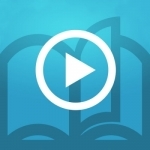
Audioteka - Hörbücher
Book and Entertainment
App
Audioteka bietet digitale Hörbücher & Hörspiele aller Genres an. In unserer kostenlosen...
EmersonRose (320 KP) rated The Eye of the World (Wheel of Time, #1) in Books
Nov 20, 2019
“As the Wheel of Time turns, places wear many names. Men wear many names, many faces. Different faces, but always the same man. Yet no one knows the Great Pattern the Wheel weaves, or even the Pattern of an Age. We can only watch, and study, and hope.”
― Robert Jordan, The Eye of the World
There is perhaps nothing more magical than finding yourself fully immersed in a story. The first book in The Wheel of Time series, The Eye of the World, creates a full world of places, histories, species, religions, and myths. Robert Jordan first introduces you to the simple town of Emonds Field and the characters that live there. Then he takes us with those characters to explore a vast and more complex world. We are taken on a journey through different cities and meet a variety of people including meeting strange creatures and beings with strange, magical powers. Including Trollocs, Aes Sedai, Warders, and Myddraal. Jordan has an extraordinary ability to create intriguing mythologies for his world and creating species that have fully formed cultures and politics.
But before I get too far ahead of myself let us start with Robert Jordan. He is an American 31ulybtb-yl-_ux250_author from South Carolina, whose real name is James Oliver Rigney, JR. He lived from 1948 to 2007. He wrote books in many genres including fantasy, historical fiction, western and dance criticism each under a different pen name. The first book in his The Wheel of Time series was published in 1990. He was able to finish eleven books in the series before he passed, leaving his extensive notes to renowned novelist Brandon Sanderson who wrote the last three books of the series, finishing in 2013.
Personally, when reading a book, the most important thing for me is to become invested in at least one of the characters. Once I am, I’m completely dedicated to the book. Robert Jordan has a large group of main characters and switches perspective between them throughout their journey. Picking out a single main character is very difficult, Rand al’Thor might be the closest but Matrim (Mat) Cauthon and Perrin Aybara and possibly Egwene al’vere and Nynaeve al’Meara create the central cast. They are the natives of Emonds Field before their adventures take them journeying to places unknown. Each of them is special and through the course of the book, you uncover the power each has. What is amazing is how Jordan is able to make you care deeply for each character and while he is switching perspective you never find yourself, bored. This is impressive for often in novels that switch perspective there is that one storyline you do not care about. Upon finishing the first book I can honestly say that I do not have a single favorite out of the group but love them all and care about what will happen to them next.
My one issue with the book came with frustration at what I call Tolkien Naming Syndrome. With such a mass of characters it is not surprising that some names start to sound similar but like Arwen and Eowyn there are two females with feelings for one of the boys whose names are oddly similar Elayne and Egwene with other female names rhyming such as Moiraine and Morgase while the male names tend to sound different and are thus easier to keep apart and remember. Depending on what you want in a story, the other thing that keeps this book from being unique is the black and white stance on good vs. evil. The two sides are clear and do not leave much room for the morally grey.
The book offers a great mix of solved mysteries while leaving you with an abundance of questions to make you need to continue reading the story. It truly is an epic adventure story. Fulfilling the good vs. evil battling and grand adventures and meeting strange creatures and discovering new magic. While it might not have the grand battles of Lord of the Rings it has the magical journey and strange adventures that create the amazing epic fantasy novel. I plan on reading the next book soon and highly recommend this book to fantasy readers as it offers great characters, an amazing world and interesting rules on magic.
― Robert Jordan, The Eye of the World
There is perhaps nothing more magical than finding yourself fully immersed in a story. The first book in The Wheel of Time series, The Eye of the World, creates a full world of places, histories, species, religions, and myths. Robert Jordan first introduces you to the simple town of Emonds Field and the characters that live there. Then he takes us with those characters to explore a vast and more complex world. We are taken on a journey through different cities and meet a variety of people including meeting strange creatures and beings with strange, magical powers. Including Trollocs, Aes Sedai, Warders, and Myddraal. Jordan has an extraordinary ability to create intriguing mythologies for his world and creating species that have fully formed cultures and politics.
But before I get too far ahead of myself let us start with Robert Jordan. He is an American 31ulybtb-yl-_ux250_author from South Carolina, whose real name is James Oliver Rigney, JR. He lived from 1948 to 2007. He wrote books in many genres including fantasy, historical fiction, western and dance criticism each under a different pen name. The first book in his The Wheel of Time series was published in 1990. He was able to finish eleven books in the series before he passed, leaving his extensive notes to renowned novelist Brandon Sanderson who wrote the last three books of the series, finishing in 2013.
Personally, when reading a book, the most important thing for me is to become invested in at least one of the characters. Once I am, I’m completely dedicated to the book. Robert Jordan has a large group of main characters and switches perspective between them throughout their journey. Picking out a single main character is very difficult, Rand al’Thor might be the closest but Matrim (Mat) Cauthon and Perrin Aybara and possibly Egwene al’vere and Nynaeve al’Meara create the central cast. They are the natives of Emonds Field before their adventures take them journeying to places unknown. Each of them is special and through the course of the book, you uncover the power each has. What is amazing is how Jordan is able to make you care deeply for each character and while he is switching perspective you never find yourself, bored. This is impressive for often in novels that switch perspective there is that one storyline you do not care about. Upon finishing the first book I can honestly say that I do not have a single favorite out of the group but love them all and care about what will happen to them next.
My one issue with the book came with frustration at what I call Tolkien Naming Syndrome. With such a mass of characters it is not surprising that some names start to sound similar but like Arwen and Eowyn there are two females with feelings for one of the boys whose names are oddly similar Elayne and Egwene with other female names rhyming such as Moiraine and Morgase while the male names tend to sound different and are thus easier to keep apart and remember. Depending on what you want in a story, the other thing that keeps this book from being unique is the black and white stance on good vs. evil. The two sides are clear and do not leave much room for the morally grey.
The book offers a great mix of solved mysteries while leaving you with an abundance of questions to make you need to continue reading the story. It truly is an epic adventure story. Fulfilling the good vs. evil battling and grand adventures and meeting strange creatures and discovering new magic. While it might not have the grand battles of Lord of the Rings it has the magical journey and strange adventures that create the amazing epic fantasy novel. I plan on reading the next book soon and highly recommend this book to fantasy readers as it offers great characters, an amazing world and interesting rules on magic.
David McK (3676 KP) rated The Shepherd's Crown in Books
Jan 28, 2019
THE FINAL DISCWORLD BOOK
Those four words were always going to make a long-time Discworld reader feel quite emotional, making it hard to objectively review the novel itself: are you reviewing this last peek into Pratchett's mirror reality, or are you reviewing the entire 41-book series? I'm going to try both:
THE SERIES
The first Disworld book I read (I'm pretty sure it was [b: Pyramids|64217|Pyramids (Discworld, #7)|Terry Pratchett|https://images.gr-assets.com/books/1439098306s/64217.jpg|968512]) wasn't actually the first in the series (that would be [b: The Colour of Magic|833512|The Colour of Magic The Illustrated Screenplay|Vadim Jean|https://images.gr-assets.com/books/1347346368s/833512.jpg|17589693]), although I did later go back and read the earlier works. Reading them in order released (as opposed to one of the numerous Discworld Reading Order Guides: I'm quite partial to the 'Unofficial Discworld Reading Order Guide'), you can see how Terry Pratchett's writing style evolved, how he moved from outright satire to a more subtle comedy fantasy that holds a mirror up to real-world issues. Personally, I feel he was at his best at around the mid-way point of the series (say, [b: Maskerade|64305|Maskerade The Play|Terry Pratchett|https://images.gr-assets.com/books/1170622047s/64305.jpg|62427] or [b: Men at Arms|7557548|Men at Arms The Play|Terry Pratchett|https://images.gr-assets.com/books/1353573652s/7557548.jpg|9910828], after he'd found his feet (so-to-speak), but before the 'embuggerance' of his posterior cortical atrophy set in and the novels - perhaps understandably - started becoming almost too serious.
Throughout the series, there was a rich tapestry of characters introduced, from CMOT Dibbler through to the Patrician of Ankh-Morpork, with certain groups of characters (e.g. The City Watch) effectively becoming a sub-series in their own right. One of those groups - Granny Weatherwax (first introduced in [b: Equal Rites|34507|Equal Rites (Discworld, #3; Witches, #1)|Terry Pratchett|https://images.gr-assets.com/books/1407706800s/34507.jpg|583611] and The Witches of Lancre (first introduced in [b: Wyrd Sisters|233664|Wyrd Sisters The Play|Terry Pratchett|https://images.gr-assets.com/books/1388363090s/233664.jpg|17589683] - would later themselves have 'guest spots' in another group of such characters, ostensibly written for Young Adult Readers but still very enjoyable for older; the Nac Mac Feegles (Crivens!) and Tiffany Aching, both of who first appeared in [b: The Wee Free Men|7881001|The Wee Free Men The Beginning (Discworld, #30 & #32)|Terry Pratchett|https://images.gr-assets.com/books/1388181365s/7881001.jpg|22017239]. Which nicely brings me to:
THE NOVEL ITSELF
'The Shepherd's Crown' sees a return of both Tiffany Aching, now a young Witch setting out on her career path, and those Nac Mac Feegles. There's a strong sense of change throughout, kicked off by the surprising early exit of a previous major character in the entire series, leading to old foes - the Elves - to try to make their way back into the world. These Elves, remember, are *not* the dainty do-gooders of Tolkien: these are nasty, malicious, self-serving creatures who last attempted to invade in [b: Lords and Ladies|34529|Lords and Ladies (Discworld, #14; Witches #4)|Terry Pratchett|https://images.gr-assets.com/books/1469186110s/34529.jpg|1185086], before eventually being defeated by Granny Weatherwax, Nanny Ogg and Magrat Garlik. Those three characters make a return in this, as well as bit-parts for the Arch-Chancellor of Unseen University, Ponder Stibbons (and HEX) alongside King Verence and the Patrician. Despite all these, the novel, however, is really Tiffany's story, and of how she finds her feet in the circumstances into which she is rather abruptly thrown. There's also a plot element that recalls [b: Equal Rites|34507|Equal Rites (Discworld, #3; Witches, #1)|Terry Pratchett|https://images.gr-assets.com/books/1407706800s/34507.jpg|583611]: that of a person wanting to do a role that is generally considered to be that for a member of the opposite sex.
As always, footnotes are present and correct, with the novel even raising a few laugh-out-loud moments. While the story does finish with the words 'THE END', the world itself will continue on: all that has come to an end is our ability to peek into it.
In the words of the Nac Mac Feegle: "Waily waily waily ..."
Rating for the series: 5*
Rating for the novel: 4*
Those four words were always going to make a long-time Discworld reader feel quite emotional, making it hard to objectively review the novel itself: are you reviewing this last peek into Pratchett's mirror reality, or are you reviewing the entire 41-book series? I'm going to try both:
THE SERIES
The first Disworld book I read (I'm pretty sure it was [b: Pyramids|64217|Pyramids (Discworld, #7)|Terry Pratchett|https://images.gr-assets.com/books/1439098306s/64217.jpg|968512]) wasn't actually the first in the series (that would be [b: The Colour of Magic|833512|The Colour of Magic The Illustrated Screenplay|Vadim Jean|https://images.gr-assets.com/books/1347346368s/833512.jpg|17589693]), although I did later go back and read the earlier works. Reading them in order released (as opposed to one of the numerous Discworld Reading Order Guides: I'm quite partial to the 'Unofficial Discworld Reading Order Guide'), you can see how Terry Pratchett's writing style evolved, how he moved from outright satire to a more subtle comedy fantasy that holds a mirror up to real-world issues. Personally, I feel he was at his best at around the mid-way point of the series (say, [b: Maskerade|64305|Maskerade The Play|Terry Pratchett|https://images.gr-assets.com/books/1170622047s/64305.jpg|62427] or [b: Men at Arms|7557548|Men at Arms The Play|Terry Pratchett|https://images.gr-assets.com/books/1353573652s/7557548.jpg|9910828], after he'd found his feet (so-to-speak), but before the 'embuggerance' of his posterior cortical atrophy set in and the novels - perhaps understandably - started becoming almost too serious.
Throughout the series, there was a rich tapestry of characters introduced, from CMOT Dibbler through to the Patrician of Ankh-Morpork, with certain groups of characters (e.g. The City Watch) effectively becoming a sub-series in their own right. One of those groups - Granny Weatherwax (first introduced in [b: Equal Rites|34507|Equal Rites (Discworld, #3; Witches, #1)|Terry Pratchett|https://images.gr-assets.com/books/1407706800s/34507.jpg|583611] and The Witches of Lancre (first introduced in [b: Wyrd Sisters|233664|Wyrd Sisters The Play|Terry Pratchett|https://images.gr-assets.com/books/1388363090s/233664.jpg|17589683] - would later themselves have 'guest spots' in another group of such characters, ostensibly written for Young Adult Readers but still very enjoyable for older; the Nac Mac Feegles (Crivens!) and Tiffany Aching, both of who first appeared in [b: The Wee Free Men|7881001|The Wee Free Men The Beginning (Discworld, #30 & #32)|Terry Pratchett|https://images.gr-assets.com/books/1388181365s/7881001.jpg|22017239]. Which nicely brings me to:
THE NOVEL ITSELF
'The Shepherd's Crown' sees a return of both Tiffany Aching, now a young Witch setting out on her career path, and those Nac Mac Feegles. There's a strong sense of change throughout, kicked off by the surprising early exit of a previous major character in the entire series, leading to old foes - the Elves - to try to make their way back into the world. These Elves, remember, are *not* the dainty do-gooders of Tolkien: these are nasty, malicious, self-serving creatures who last attempted to invade in [b: Lords and Ladies|34529|Lords and Ladies (Discworld, #14; Witches #4)|Terry Pratchett|https://images.gr-assets.com/books/1469186110s/34529.jpg|1185086], before eventually being defeated by Granny Weatherwax, Nanny Ogg and Magrat Garlik. Those three characters make a return in this, as well as bit-parts for the Arch-Chancellor of Unseen University, Ponder Stibbons (and HEX) alongside King Verence and the Patrician. Despite all these, the novel, however, is really Tiffany's story, and of how she finds her feet in the circumstances into which she is rather abruptly thrown. There's also a plot element that recalls [b: Equal Rites|34507|Equal Rites (Discworld, #3; Witches, #1)|Terry Pratchett|https://images.gr-assets.com/books/1407706800s/34507.jpg|583611]: that of a person wanting to do a role that is generally considered to be that for a member of the opposite sex.
As always, footnotes are present and correct, with the novel even raising a few laugh-out-loud moments. While the story does finish with the words 'THE END', the world itself will continue on: all that has come to an end is our ability to peek into it.
In the words of the Nac Mac Feegle: "Waily waily waily ..."
Rating for the series: 5*
Rating for the novel: 4*
